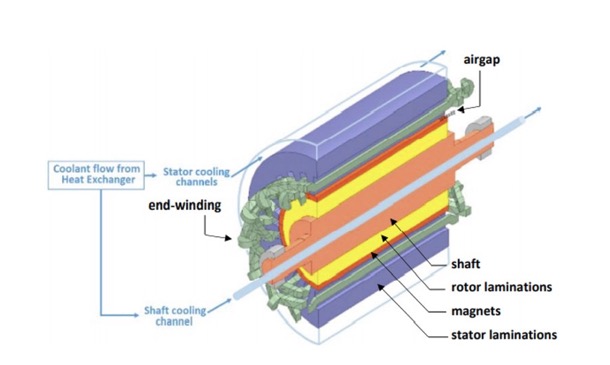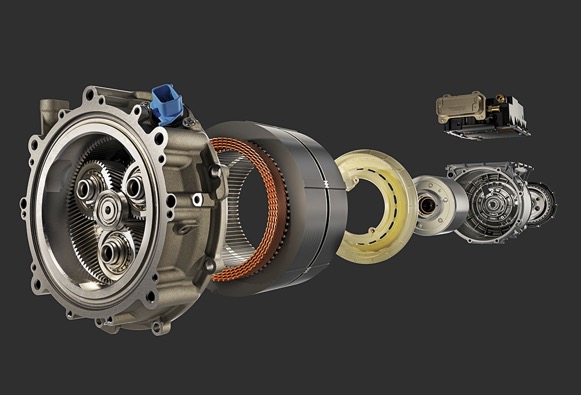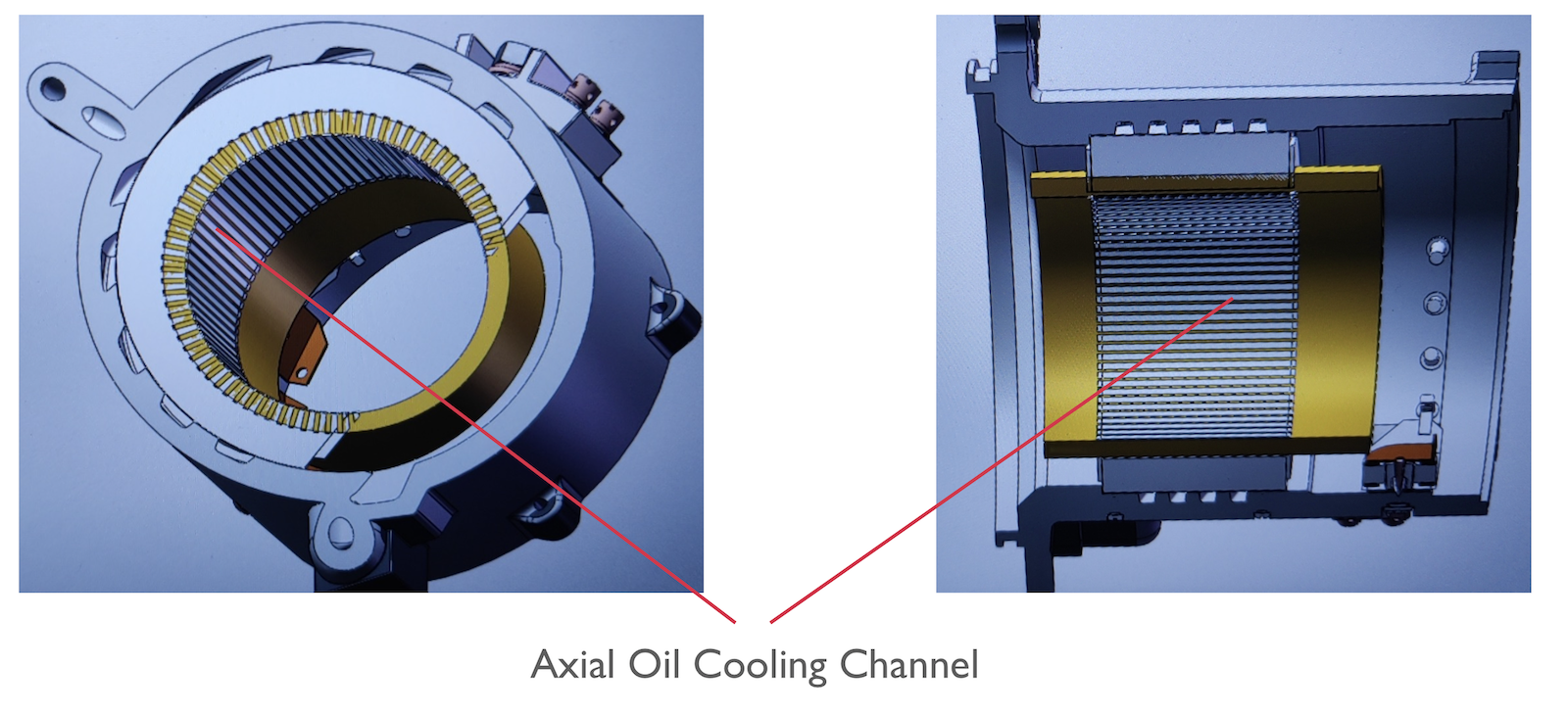New energy vehicles development is highly demanding the motor efficiency, power density, dynamic response and NVH, that speeds up the EV motor development towards higher precision, higher power density, miniaturization, light weighting and multi-in-one mechatronics integration. However, it brings about issues like a sharp increase in internal heat generation within motors, severely inadequate effective heat dissipation space, which limits further improvement in motor system power density. Elevated temperatures inside the motor can lead to demagnetization of permanent magnet materials, aging of insulation layers, and increased resistance of copper wire windings at high temperatures, reducing motor efficiency and exacerbating motor heating. According to new energy vehicle motor thermal management system analyzes that 30% to 40% of permanent magnet motor failures are attributed to excessive motor temperature rise.
Motors have critical components such as the winding, stator and housing having insulation varnish, insulation paper, and air with extremely low thermal conductivity between their contact surfaces. This increases the contact thermal resistance between various motor components, significantly reducing the heat dissipation efficiency of crucial motor parts. The lengthy heat transfer path and substantial contact thermal resistance between critical heating components inside the motor and the housing pose higher demands on the cooling system.

Motors have been commonly utilizing three cooling systems including Air cooling, Liquid cooling and evaporative cooling. Air cooling system, known for its low cost, high reliability, and easy installation, have been widely employed in the field of heat dissipation for low-power motors. Liquid cooling systems offer higher dissipation capabilities, with an efficiency up to 50 times greater than the Air cooling system. They are suitable for situations where motors generate significant heat and have high heat flux density. However, Liquid cooling systems require additional circulating fluid circuits and sealing systems, which increases the complexity and cost of the motor system. Evaporative cooling systems are mainly used for cooling systems in megawatt-level large-capacity generator units, applying gas-liquid phase change cycles to achieve effect cooling for the motor.

The liquid cooling forms of automotive permanent magnet synchronous motors can be broadly categorized into two types: direct cooling and indirect cooling. Indirect cooling involves cooling passages designed within the motor housing, through which cooling fluid passes to carry away heat. Direct cooling involves injecting cooling oil directly into the sealed motor, utilizing the high specific heat capacity of the cooling oil for heat dissipation. Moreover, direct cooling can increase the contact area with the heat source, resulting in better cooling efficiency. The end sections of the winding in permanent magnet synchronous motors generate significant heat. In water cooling, the cooling fluid cannot directly contact the winding. However, in oil cooling, the cooling oil can directly contact the winding, leading to higher cooling efficiency and maximizing the motor’s potential performance, enhancing power density and torque density. More oil cooling advantages can be concluded:
Excellent insulation performance enables direct contact with windings and magnetic materials, effectively cooling heat sources, eliminating hotspots. The cooling process is direct and efficient, non-magnetic, non-conductive, and does not affect the motor’s electromagnetic field characteristics.
Compared to water, oil has a higher boiling point, lower freezing point, is less prone to boiling at high temperatures, and less prone to condensation at low temperatures. It has a broader and more stable operating range and avoids phase changes.
For spray-cooled motors, there is no need to design water channels in the casing, nor is there a need for fans and ducts, which reduces volume.

Oil cooling solutions generally are grouped into three categories:
Stator Oiling: Oil is applied to the stator windings or stator core directly, cooling the stator.
Stator oiling plus Rotor flinging: While the stator is being oil-cooled, there are also oil passages designed within the rotor. The cooling oil within the rotor’s oil passages is flung towards the stator due to centrifugal force, cooling both the stator and the rotor.
Stator internal oil passages plus stator oiling and rotor flinging: Building upon the second approach, internal cooling is added to the stator, further enhancing cooling effectiveness.
In terms of Rotor cooling, it is typically accomplished by directing cooling oil through a hollow shaft into oil passages located between the rotor core and the side endplates.Under the influence of centrifugal force, the oil flows out from the endplates, effectively reducing the working temperature of the magnetic steel. This approach significantly enhances the lifespan of the magnetic steel and the output capability of the motor.
Regarding Stator cooling, it is generally achieved by oiling, where cooling oil is sprayed onto the stator windings and core. Due to the force of gravity, the oil flows to other locations, providing cooling for the stator.
Water cooling systems present hidden risks such as rusting, blockages, and leaks. Once a leak occurs, it directly jeopardizes the safety of the motor. Therefore, a highly reliable sealing of the circulation pipeline in the water cooling system is essential. Compared to water-based mediums, oil-based medium can enhance the adaptability of the motor system to external environments, preventing corrosion hazards like cavitation and scaling. In a direct oil cooling system, the cooling oil comes into direct contact with the motor’s heating components, resulting in much higher heat dissipation efficiency.

Conatct Quadrant or more inquire about motor design.
